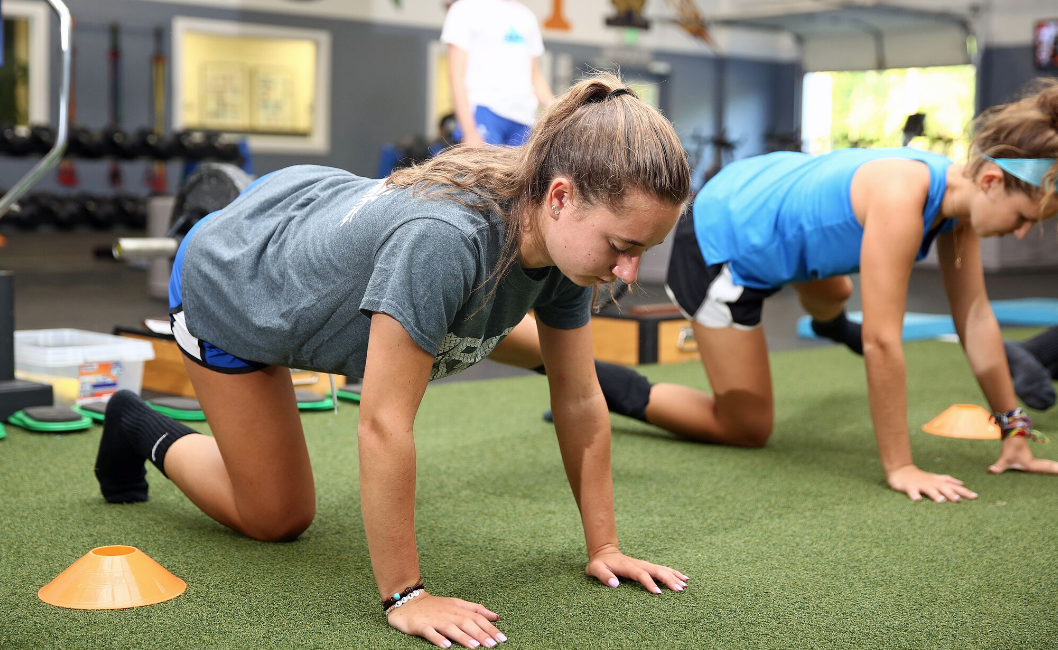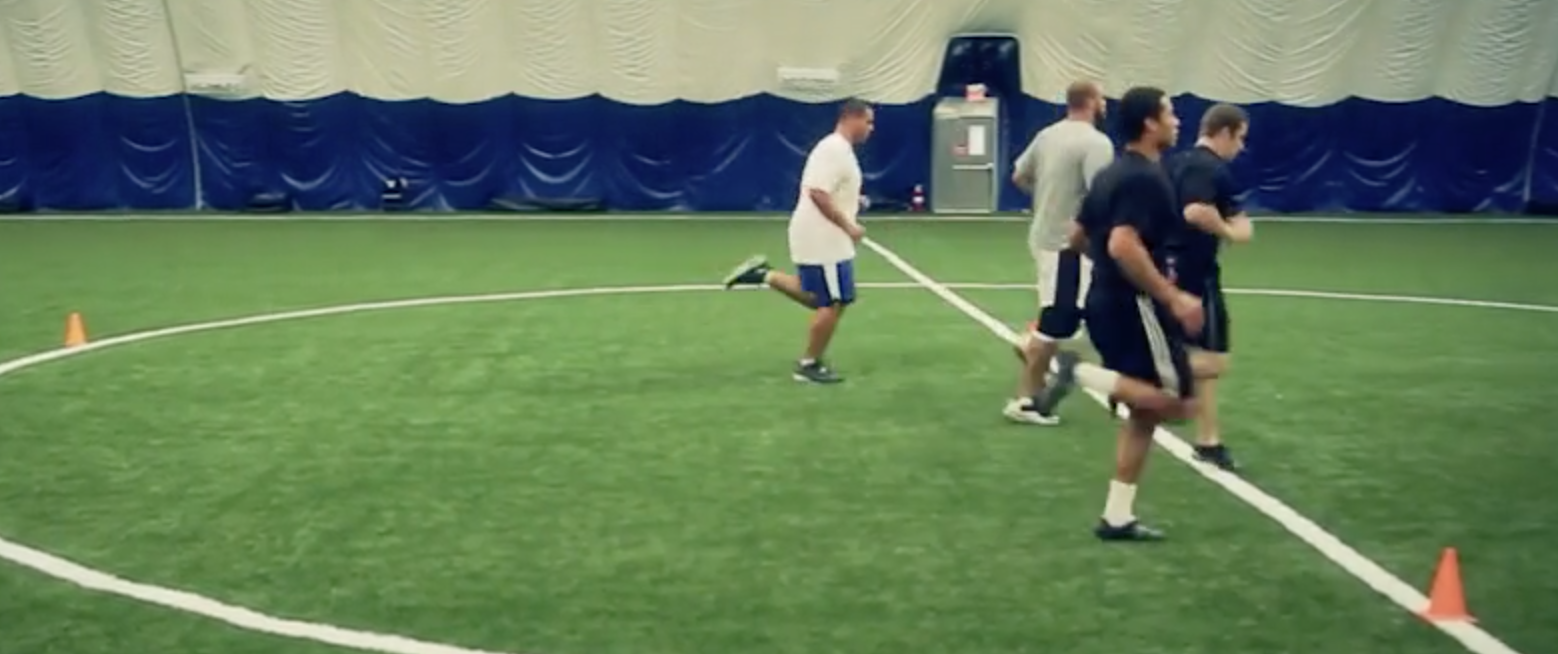Warm up to achieve optimum performance
By: Adarian Barr

Everyday, athletes are given instructions by coaches to warm-up before practice or before the game. Athletes do a variety of activities to warm-up such as jogging; walking, stretching, performing drills, socializing, or some may do nothing. The question is why do coaches have athletes warm up? An informal survey of 20 athletes gave the responses: "It makes me feel better" or "It helps me loosen up". Some even replied that it helps them to focus, or that they don’t want to get hurt by not warming up. These are all valid and good responses. An informal survey of 5 coaches gave the response of "To prevent injuries". However, if the warm up is done improperly it can also hurt an athlete’s performance and may predispose them to injury. The first question is why should an athlete warm up at all? Athletes should warm up to increase the success of having an optimum performance. What type of warm up can enhance athletic performances? A properly performed warm up can and will enhance an athletic performance.
A proper warm up has three purposes, one is to start the metabolic process, two is to reduce injuries by increasing muscle elasticity and thirdly to protect the heart.
Heart Protection: Studies have shown that warming up before intense exercise will reduce surges in arterial blood pressure, and avoid shocking the heart into action. Gradually allowing the heart to adjust to high intensity workouts, gives the lungs and blood time to bring extra oxygen to the heart that will be beneficial for the short and long term health of the athlete.
Injury prevention: When muscles initially contract, energy is released. However, the body is not very efficient at using that heat. Part of the energy released from heat goes toward energy production, some goes to warming up the tissue, and the rest is lost through the skin. As the tissue warms up, your heart rate increases to circulate the blood faster in an attempt to remove the heat, which spreads the heat to other parts of the body. With the heat from energy being released at working muscle, plus the extra heat gained from the warmer circulating blood the muscle tissue becomes warmer.
The result is the muscle will have increased elastic properties versus a cold muscle or even a muscle at normal body temperature. Elastic properties allow the muscle to return back to normal resting length after being stretched. The greater the elasticity of the muscle, the less potential to strain or tear the muscle, this also allows muscle to contract stronger and faster. The increase in blood temperature may only be 1 to 2 degrees above normal body temperature. The term warmer muscle is used as oppose to warmed up muscle because the muscle is at about 98 degrees before warming up and the body will not allow itself to get too much warmer, roughly the body likes 99 to 100 degrees for optimum athletic performance.
Oxygen demand versus supply: As the muscle contracts, it creates carbon dioxide (CO2) and demands more oxygen (O2). Oxygen breaks away from hemoglobin easier as the local muscle tissue temperature increases, also carbon dioxide leaves the local muscle tissue easier, and that is the most important reason to warm up, to facilitate oxygen/ carbon dioxide diffusion.
At the start of any exercise you use ATP-PC for energy production. The less of this energy you use while warming up the smaller the oxygen debt you will accumulate waiting for the aerobic energy system to come up to speed. This will allow an athlete to save some of his/her ATP-PC energy for the initial and latter part of the race.
Not warming up enough will allow for a larger oxygen debt they will be paid back during the first part of a race, and over warming up will induce partial fatigue before you even start to compete which will hinder the early part of an explosive event or race.
Keep in mind that you can be at maximum oxygen uptake in 45 to 90 seconds, also keep in mind that your body is always playing catch up, so that during a race longer than 2 to 3 minutes your heart and lungs will take the first 2 to 3 minutes to reach a steady state. Also at this point if you make a move in a longer race your body is supplying enough oxygen for the previous 2 to 3 minutes of effort.
How long does this take? That depends on the level of conditioning of the athlete and genetics, the latter, which can't be influenced. As soon as part of the body starts to sweat, that is a good sign that the desire temperature has been reached.
Remember demand for oxygen is a local tissue issue, your whole body will be saturated with warmer blood, but only those muscles that are working will benefit from the increase oxygen carbon dioxide exchange derived from the temperature increase.
As you warm up be sure to warm up those muscle that are major contributors to the movement that will be conducted, the muscles that are not being used the veins will constrict to help return blood to the heart which will help increase your heart stroke volume. The local veins and arteries will also dilate to allow more blood into and out of the local muscle tissue, which brings in more oxygen and also removes more carbon dioxide.

Some tips for the warming -up to have an optimum performance:
A. Intense enough to start the metabolic process of increased blood circulation, CO2 and O2 exchange, but not too intense to create fatigue. Initial perspiring is a good indicator along with elevated pulse rate.
B. The warm up should involve those muscles that are required for the movement. Avoid max effort as this uses more ATP-PC than is necessary.
C. The warm up should end when the event begins, as you are always 2 to 3 minutes behind in adjusting O2 supply and demand.
D. If the warm-up was intense then the last part should be of lower intensity to balance out the supply and demand of O2 and aide in replenishing ATP.
Warming up is beneficial and some type of warm up is better than none at all, but for optimal performance the warm up has to be correct. The warm up should serve to protect the heart, reduce injury and reduce the initial oxygen deficits.
Sample warm ups drills:
Walking drills, knee to shoulder
Walking toes or calf raises
Stationary lunges, front angle and side
Easy jump rope for 2 minutes
High knees
Slow deep knee bends
Dynamic stretching
Hurdle walk over with hands held in the air
About the Author:
Adarian Barr
Functional Fitness Training “Raising the level of Performance”
triplejumptorey@netscape.net

—————————————————————————–




0 Comments for “Athletic Warm Up”